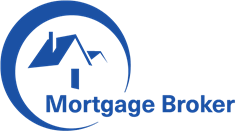What Types of Loans Are Available?
A loan is an arrangement in which a lender lends funds to another party in exchange for repayment plus interest. Borrowers can take out loans to finance a variety of activities, including making purchases or investing. Understanding what types of loans are available can help borrowers make informed choices and get the best financing arrangements for their needs.
The term of a loan refers to the length of time over which a borrower must repay the debt, or at least begin to pay interest. Depending on the type of loan, this may be as short as two years for an auto loan or as long as 30 years for a mortgage. Loan terms also establish how much a borrower must pay per month, and whether late payment penalties apply. They may also set forth any collateral requirements and other stipulations, such as a requirement that a borrower provide a down payment before receiving the loan.
Generally, loan amounts must be repaid within a specific number of years. This period is called the “term.” The term for personal loans, such as credit cards and student loans, typically ranges from two to seven years. The term for home loans and other large mortgages is usually 15 or 30 years.
The amount that a borrower agrees to pay back over the course of the term is known as the “principal.” Some lenders tack on loan fees, such as processing fees and origination fees, onto the principal when the money is disbursed. Usually, when a borrower makes a monthly payment, a portion of it goes toward paying accrued interest and the remainder pays off the loan principal.
Consumers use revolving lines of credit, such as credit cards and HELOCs, to manage dips in income or unforeseen expenses. These types of loans are different from other forms of revolving credit, such as home equity loans, which require a lump-sum repayment.
A revolving line of credit is a financial tool in which a lender extends to a consumer a maximum aggregate amount of capital, which the consumer can draw down, repay and then borrow again over an extended period of years. During the “draw” period, the consumer does not start to pay interest until he or she has used some of the credit limit. A revolving line of credit is often renewable, which means that the amount that the consumer can withdraw and use again is replenished each year. This type of credit is commonly used by home buyers, who receive a home equity line of credit with the purchase of a new house. Credit lines can also be established by business owners who want to finance expansion projects or for other reasons, such as purchasing equipment to increase productivity. A revolving line of credit can be an attractive option because it is easy to qualify for and obtain. However, consumers should understand that revolving lines of credit can lead to high levels of debt and interest.
